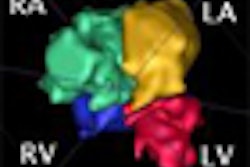Educational Exhibit | LL-HS5020 | Lakeside Learning Center
In this educational exhibit, Stanford University researchers will present their success with a quality control program in their 3D lab.3D imaging can be very operator-dependent, raising the possibility of user variability. In addition, insufficient training can also increase the potential for postprocessing errors. With the growing number of 3D operators at Stanford increasing the potential for these types of errors, the institution sought to identify the scope of the problem, establish methods for measuring errors, and identify areas that needed improvements, said 3D lab manager Laura Pierce from the university in Stanford, CA.
In designing the quality control effort, the group identified workflow, training, protocols, and image/measurement validation as its primary targets. The current system allows for immediate identification and correction of errors, Pierce said.
"We found that standardization of 3D protocols, together with technologist mentoring by supervisors and radiologists, are essential for quality assurance and have led to remarkable improvement in exam quality and reproducibility," she told AuntMinnie.com.
To learn more about how Stanford achieved its quality assurance goals, visit the exhibit at the Lakeside Learning Center.




















